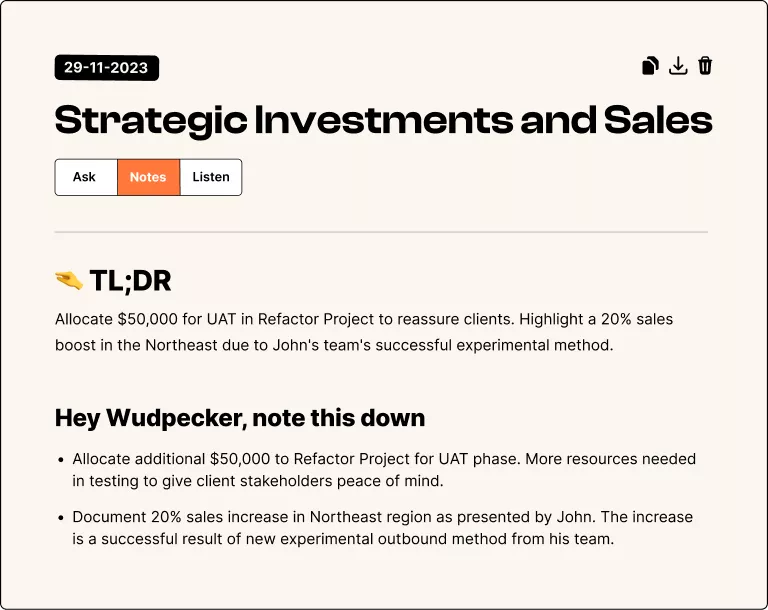Feature adoption is key to SaaS success. When users engage with your platform's features, it leads to higher revenue, customer satisfaction, and reduced churn. Here's what you need to know:
- Why It Matters: More feature usage = more upgrades, renewals, and loyalty.
- Key Metrics:
- Feature Adoption Rate (FAR): % of users actively using a feature.
- Time to First Use (TTFU): How quickly users try a feature.
- Feature Stickiness: Ratio of daily to monthly users (DAU/MAU).
- How to Improve:
- Use onboarding to guide users to value fast.
- Communicate with in-app messages and emails.
- Leverage tools like Userlens for insights into feature usage.
- Revenue Impact:
- Spot upsell opportunities by tracking power users.
- Prevent churn by identifying disengagement early.
Start by analyzing feature usage data, act on insights, and prioritize features that deliver the most value to your customers.
The Feature Adoption Funnel: How to measure feature usage ...
Understanding Feature Adoption Basics
Feature adoption tracks how often users actively engage with a product's main features, not just one-off interactions.
Core Metrics and Measurements
To understand feature adoption, focus on these metrics:
- Feature Adoption Rate (FAR): This shows the percentage of users who activate a feature. A higher FAR means more users are finding the feature useful.
- Time to First Use (TTFU): Measures the time it takes for a user to try a feature after signing up. Faster TTFU often leads to better long-term engagement.
- Feature Stickiness: Calculated as the ratio of Daily Active Users (DAU) to Monthly Active Users (MAU). A higher ratio signals stronger, ongoing engagement.
Each of these metrics offers valuable insights into how users interact with your product.
Impact on SaaS Business Growth
These metrics play a critical role in driving revenue and shaping customer satisfaction:
- Revenue Growth: When users engage more with features, it often leads to upgrades, additional purchases, or extended subscriptions.
- Customer Satisfaction: Strong feature adoption is linked to happier customers and reduced churn rates.
- Product Development Insights: Knowing which features are most valuable helps prioritize development efforts and allocate resources effectively.
Analyzing Feature Usage Data
Key Metrics to Track
To understand how features are being adopted, focus on these important metrics:
- Active Usage Time: How long users actively engage with a specific feature.
- Feature Interaction Depth: How thoroughly and effectively users are utilizing the feature.
- Cross-feature Usage: How different features are combined within workflows.
- Team Adoption Rate: What percentage of team members are actively using critical features.
Pay attention to both the adoption rate and the depth of engagement. For instance, if a team has a high adoption rate but individual usage is shallow, it could mean the feature's full potential isn't being tapped.
Leveraging Product Analytics Tools
Modern analytics tools can help uncover insights by tracking two main areas: user activity patterns (like peak usage times and how features are adopted over time) and usage signals (such as consistent engagement across roles or gradual exploration of features).
For example, tools like Userlens provide ready-made dashboards with visualizations - such as activity dots - that help B2B SaaS companies better understand user behavior and feature adoption trends. These insights can be instrumental in linking user behavior to business outcomes.
Tying Usage to Revenue
Feature usage data can highlight both immediate revenue opportunities and long-term growth potential.
In the short term, strong engagement - like widespread team usage and in-depth interaction with core features - often reflects early signs of value recognition. Over the long term, consistent engagement, broader adoption across an organization, and the rise of power users show that the product continues to deliver meaningful value.
sbb-itb-6285ddb
Increasing Feature Usage
User Onboarding Best Practices
Onboarding is key to getting users to embrace features. Design guided experiences that show users how to get the most value while addressing their main challenges. Use interactive walkthroughs to demonstrate features in real-time and trigger prompts based on user actions to introduce new capabilities step by step.
User Communication Methods
Once onboarding is in place, ongoing communication helps keep users engaged. A multi-channel approach works best, including:
- In-app messaging: Highlight relevant features with context-specific prompts.
- Email campaigns: Send tailored tips based on user segments.
- Product updates: Share new features through release notes.
- Usage insights: Offer analytics to help users and teams make the most of your features.
Tools like Userlens can help you identify the best opportunities to introduce users to features they haven’t tried yet.
Using Customer Feedback
User feedback is a powerful tool for identifying obstacles to feature adoption. Gather input through methods like interviews, support tickets, and surveys to capture both numbers and user opinions.
Combine this feedback with product analytics for a full picture of adoption challenges. For instance, if analytics show low usage and users report confusion about a feature’s purpose, focus on improving its discovery and documentation.
Monitor feature adoption metrics alongside user feedback to track the impact of your improvements. Use activity tracking to identify which features are gaining traction. These efforts not only increase engagement but also open up new revenue opportunities.
Growing Revenue Through Usage
Finding Upsell Opportunities
Tracking how customers use your product can uncover paths for boosting revenue. Look at usage patterns to spot customers who regularly hit their plan limits or actively use advanced features. For example, teams heavily using collaboration tools may be ready for enterprise-level upgrades.
Tools like Userlens activity heatmaps can help you find companies where multiple users are heavily engaged with key features - this often signals they're ready for premium plans. Similarly, customers nearing their plan limits are strong candidates for upgrades.
While upselling focuses on high usage to drive revenue, a drop in engagement can signal trouble ahead.
Preventing Customer Churn
A decline in feature usage can be an early warning sign of potential churn. Keep an eye on usage trends to identify accounts at risk. Key warning signs include:
- Core feature abandonment: A noticeable drop in the use of essential features
- Team inactivity: When key groups of users stop engaging
- Failed adoption: Initial interest in new features that quickly fades
Act quickly by offering targeted support, training sessions, or success calls when these patterns emerge. Early intervention can make a big difference.
Case Studies and Results
Data from actual use cases shows a clear connection between feature adoption and revenue growth. Key metrics to track include:
- Expansion revenue: How increased feature usage leads to plan upgrades
- Retention rates: Comparing churn rates between customers with high and low feature adoption
- Time-to-value: How quickly new users start seeing benefits from key features
For example, customers adopting workflow automation often handle more transactions, making the return on investment clear. Regularly analyze usage and revenue metrics to identify which features deliver the most value, and focus efforts on driving adoption for these areas.
Next Steps
Now that you've got the strategies in place, it's time to take action and turn feature adoption into measurable revenue growth. Here's how to get started:
Develop a solid product analytics plan to better understand how your customers are using your features.
-
Track key metrics: Connect your analytics tools to monitor important data points like:
- Daily active users per company
- Feature adoption rates across different customer groups
- Time it takes for users to see value in new features
- How often premium features are being used
- Keep an eye on activity: Tools like Userlens can help you monitor usage trends and spot potential opportunities or risks. Features like activity heatmaps can quickly highlight accounts that are thriving or struggling.
Take action based on the data: Use the insights you gather to make targeted moves:
- For accounts with high usage, schedule calls to showcase advanced features or premium add-ons.
- For accounts that seem to be struggling, offer personalized training sessions to help them get more value from underused features.
- For new customers, create clear onboarding paths that guide them to the features they'll benefit from most.
Make it a habit to review these metrics regularly and adjust your approach as needed. The goal is to create a feedback loop where customer usage informs your product development and engagement strategies.
Related posts



.svg)



















.svg)
